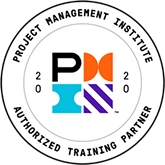Requirements Workshop
Supported browsers include Internet Explorer 10+, Chrome 3.0+, Firefox 4.0+, Opera 10.61+, Safari 3.1+, iOS 5.0+, Android 4.0+, and Blackberry 10.0+.
Requirements Workshop
Hi, I’m Roger Jennings, and I’m a trainer and consultant with Corporate Education Group.
A workshop is an effective technique to elicit and prioritize project requirements. Running one successfully however, can be challenging. A poorly executed workshop can hinder meeting your objectives, be an unproductive use of people’s time, and also reflect poorly on your skills as a business analyst. Follow the Four P’s approach to improve your outcomes — plan, prepare, practice and perform. Plan, plan, and did I mention … plan?
Start by creating a well thought out design for your workshop. Identify the purpose of the session ensuring alignment to the project’s goals. Come up with a list of individual topics and identify who the right participants are along with their group behavior patterns. Think through the logistics — location, techniques and tools to be used. Flip charts and post-it notes are so incredibly effective. Estimate times for each of your topics and produce the agenda.
Here are three ways to help define the leader in you:
- Prepare
Ensure all of your logistics are working properly, and correct any issues. Understand the topics, and research them more if necessary. Prior to the workshop, send the agenda out to the participants, and communicate anything they need to do prior to the session. Resolve any poor group behavior patterns be meeting individually to work things out. Think of potential obstacles and alternates too. - Practice makes perfect
It might be cliché, but practice really does make perfect. Ask a coworker, friend or family member to listen to your presentation. If no one is there to listen, get in front of the mirror or even video tape yourself. The more you practice out loud, the more comfortable and confident you will become. - Then Perform
During the workshop, keep one thing straight: you are there to facilitate others, not participate. It is up to you to meet the session’s objectives. You must manage the team dynamics to ensure: everyone is contributing in a positive effective manner, all of the outcomes, decisions and results are captured, and you stay on topic following the agenda, all while managing the clock. You are in charge of the session, so take an active leadership role and deliver successful requirements workshops.


